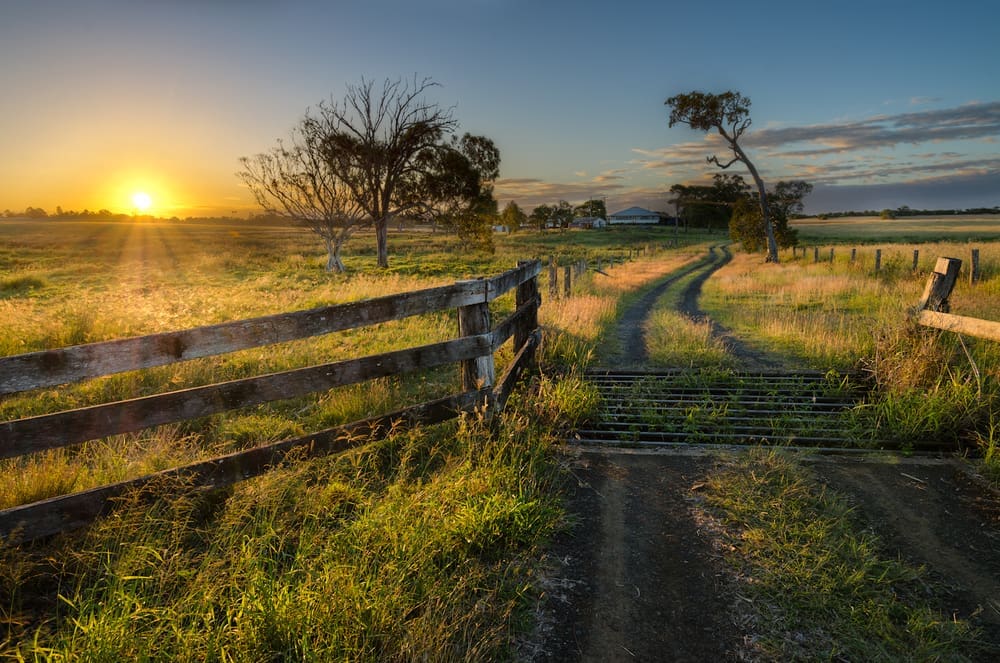
Keeping family farms in business is a central platform of the Federal Government’s Agricultural Competitiveness White Paper.
A COMMON outcry amongst the farming community is that the price of farms and properties seems out of context with the income they can generate.
There is a strong misconception that a property should pay for itself, and if it can’t then it is too expensive. But this argument is flawed by simple economic fundamentals within an unbiased deregulated market. Here’s why.
Like all assets, a farm is priced at its highest and best use within a supply and demand framework. There are four key points to note at this juncture that are relevant and unique to farm land.
Unlimited supply
Where supply is potentially unlimited, like the production of push bikes, then the price function will be a proponent of the number of buyers versus production units.
Too many bikes produced, and the price will fall. Land is a finite resource – in fact, it is a globally shrinking resource due to urbanisation, land degradation and regulation.
Demand pressures are continually increasing for farming commodities due to rising level of global wealth and demand for protein within the current population. Then add a growing population baseline and you have a strong tailwind of future earnings.
In conjunction with diminishing land availability, you now have a unique thematic of where the price of land is heading into a realm that is disconnected to the immediate production parameters.
Highest and best use
The second point is “highest and best use”. A push bike is self-explanatory and most likely finite within the universe of possible uses. A farm or property can yield value on many different spheres – some tangible and measurable and others intangible which create unexplainable “white noise” around expected pricing.
Traditional farming enterprises come to mind initially. Then there is the collage of boutique agricultural possibilities – bio-security credits, carbon sequestration, intensive farming – change of land use, eco-tourism.
White noise may entail but is not limited to land banking as a counter cyclical investment, emotive passion for an agricultural vocation, and even space has a value, just to name a few. The highest and best use for one buyer could be very different for another.
Geographically non transferrable
The third point is that land is geographically non transferrable. You cannot move your asset to a more desirable location. Therefore, geopolitical, and geologically it is a very rigid asset. By definition, this makes agricultural land even more attractive if the geophysical position of the land is in a desirable location. Australia, for instance, is highly-regulated, politically stable and noted for its clean and qualitative food production. Tick, tick and tick.
Derivation of extracted value
The fourth point is derivation of extracted value. A more cost-efficient farmer or grazier (who may have already procured economies of scale, applied superior technology and management application) can extract a higher return than potentially the asset operating as a stand-alone, undercapitalised enterprise. Therefore, the bidder who can extract the highest value can afford to bid the price of an asset higher against someone that wishes to operate the farm as a stand-alone.
Low interest rates and good seasonal conditions are just adding fuel to the fire.
A generic topic of conversation but one that is heating up with the current rush for agricultural land across Australia.
Will it continue? Our view is yes. Buyer demand is still very prevalent and with another substantial harvest about to play out, coupled with strong commodity pricing recharging the financial war chests, it is buyer pitted against buyer for land that is finite and highly desirable.
 * Ian Robinson is a founding partner with Robinson Sewell Partners. RSP is an independent agribusiness financial advisory firm located in NSW, Tasmania and South Australia but also servicing QLD and Victoria. RSP’s clients tend to be geographically remote, have limited accessibility to professional services, operate sophisticated businesses with substantial assets under management and time challenged. Click here to access details.
* Ian Robinson is a founding partner with Robinson Sewell Partners. RSP is an independent agribusiness financial advisory firm located in NSW, Tasmania and South Australia but also servicing QLD and Victoria. RSP’s clients tend to be geographically remote, have limited accessibility to professional services, operate sophisticated businesses with substantial assets under management and time challenged. Click here to access details.

It is not unusual to hear this sort advice at this stage in the real estate cycle. Of course, there is virtually no risk with acting on this advice as long as the purchaser can pay cash.